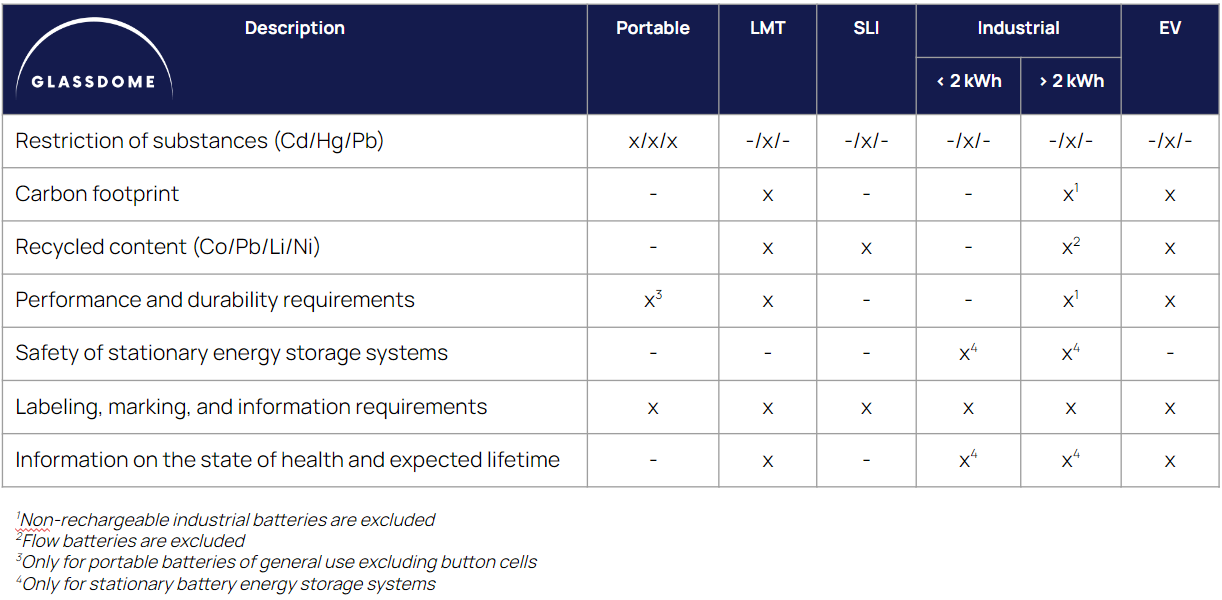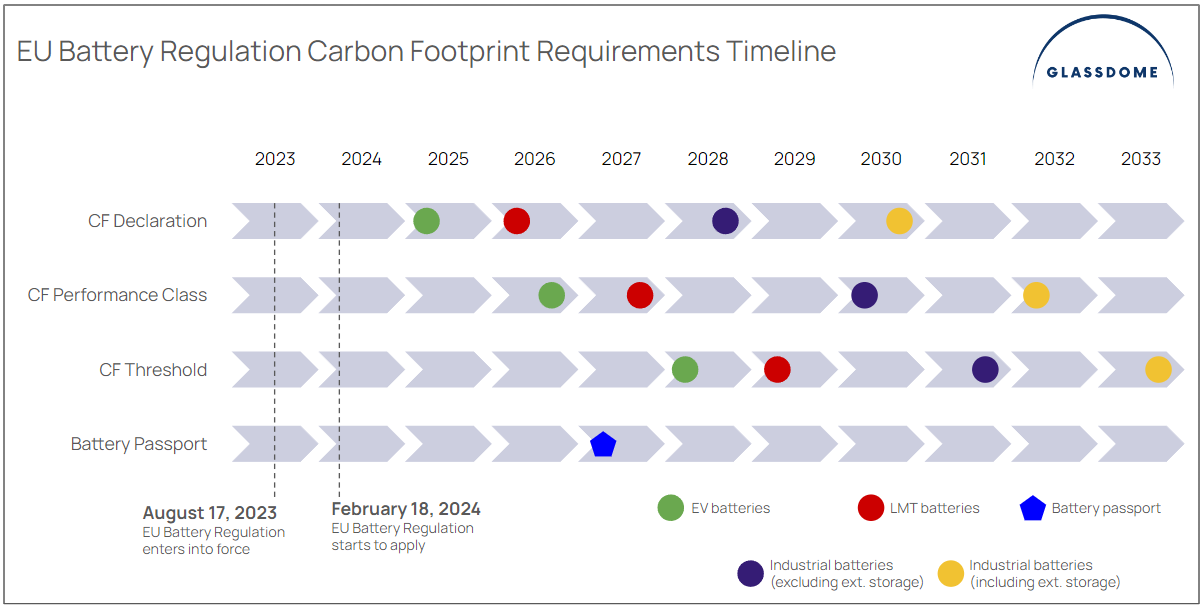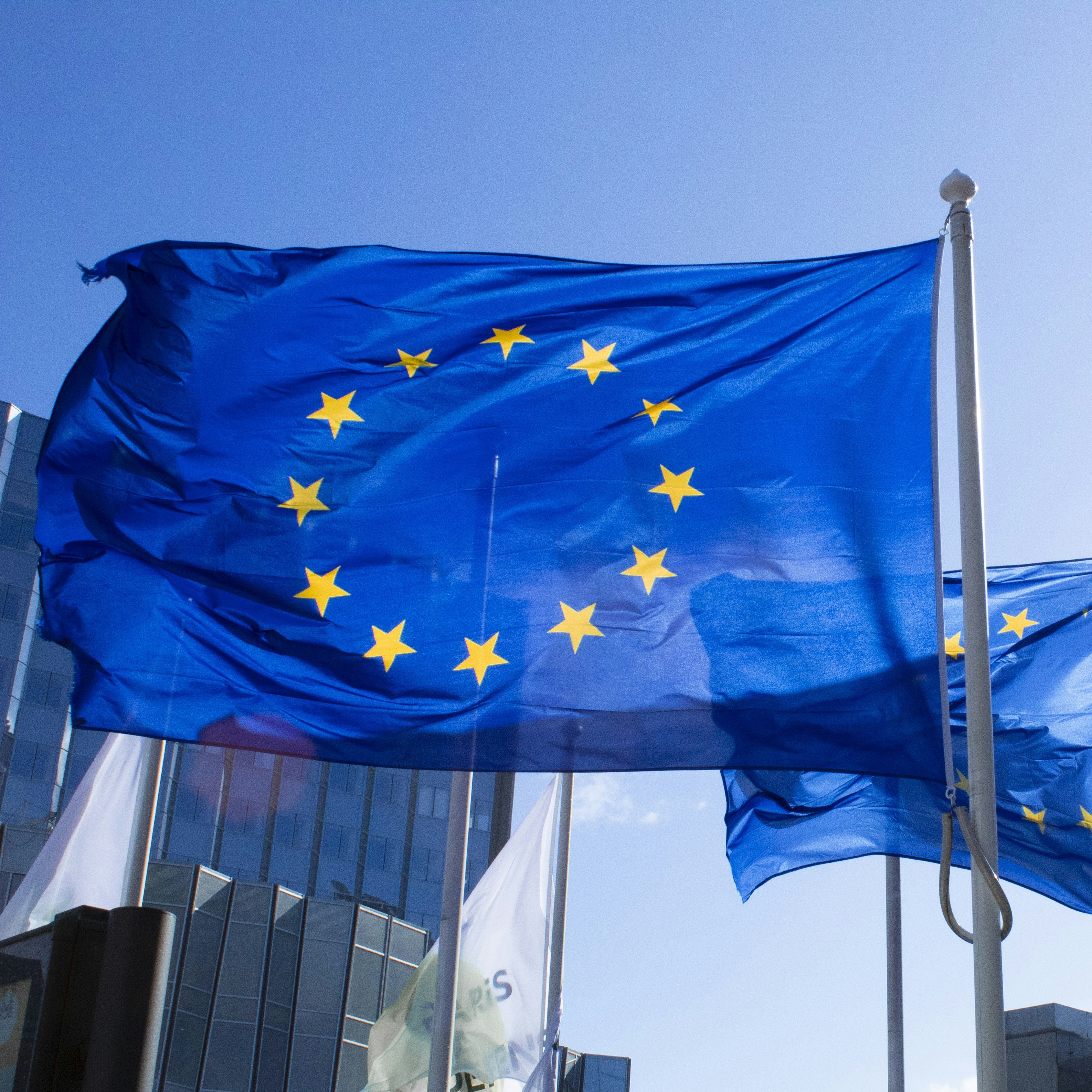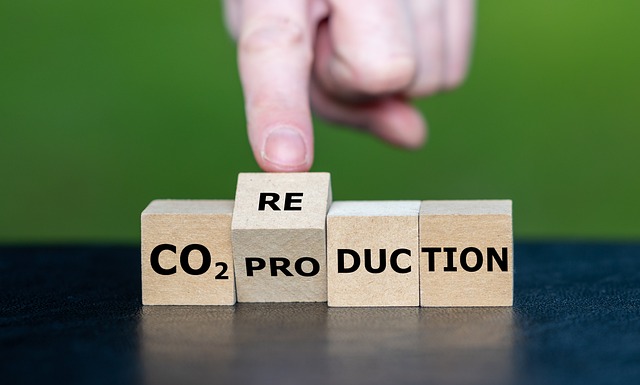The European Union (EU) Battery Regulation 2023/1542 is key to the EU’s efforts to address environmental concerns, promote sustainability, and enhance energy security. Enacted on January 1, 2023 and planned to be implemented in Q2 2024, this regulation covers the entire battery lifecycle. It sets out ambitious targets and requirements from production to disposal to mitigate the environmental impact of batteries and foster the development of a circular economy. If you import batteries to the EU, you need to know its ins and outs.
Background
This new regulation replaces the Battery Directive (2006/66/EC), and will come into effect 12 months after the act passes. In the next few years more and more new requirements will come into effect that will directly impact battery manufacturers and their supply chain.
The driving force behind the new regulation is the 2019 announcement of the European Green Deal, a growth strategy that targets zero net greenhouse gas emissions by 2050. The end goal is to decouple economic growth from resource use and ensure that products marketed and sold in the EU are sourced and manufactured in a sustainable way.
The critical role batteries play in the overall green transition, from transportation to energy storage to digital transformation, makes them a key target of regulators. Although batteries are a cornerstone of sustainable development, their product lifecycle has not always been particularly clean.
Overview
The EU Battery Regulation is designed to promote the circular economy: encouraging the reuse, recycling, and recovery of battery materials. It establishes stringent requirements for the collection, treatment, and recycling of batteries. Manufacturers are required to design batteries with recyclability in mind, ensuring that they can be easily disassembled and their components recovered. Additionally, the regulation sets recycling targets for different types of batteries, incentivizing manufacturers to invest in recycling infrastructure and technologies.
The regulation addresses the environmental and social impact of battery production by imposing strict sustainability criteria on battery manufacturers. Manufacturers need to comply with environmental and social standards throughout their supply chains. By promoting sustainable sourcing and ensuring supply chain transparency, regulators aim to reduce the environmental footprint of battery production and mitigate human rights abuses associated with mineral extraction.
Beyond sustainability goals, the EU Battery Regulation aims to enhance the safety and performance of batteries. Faulty or improperly designed batteries are a consumer risk. The regulation establishes standards for battery safety and performance, including requirements for labeling, testing, and certification.
Finally, the EU Battery Regulation addresses the issue of battery waste management by establishing a comprehensive framework for the collection, treatment, and disposal of batteries. Manufacturers will assume responsibility for collecting and recycling of batteries, either individually or through collective schemes. Additionally, the regulation encourages the development of innovative recycling technologies and processes to maximize the recovery of valuable materials from spent batteries.
Specific Requirements and Timeline

*This timeline is subject to change based on when (or whether) the implementing act passes.
CE Conformity Assessment
To be traded freely in the EU, most goods need a “CE” (conformité européenne) mark. The mark affirms that goods are compliant with EU regulations.
The new regulation makes batteries one of these CE goods. All batteries, whether in a product or sold standalone, will need the mark.
In most cases the battery manufacturer needs to handle the CE conformity assessment. Different types of batteries have different requirements. The five categories are:
- Portable batteries
- Light means of transport (LMT) batteries
- Starting, lighting, and ignition (SLI) batteries
- Industrial batteries
- Electric vehicle batteries
Manufacturers can self-certify small portable and industrial batteries (under 2 kWh). For all other batteries, a separate certification body will need to be involved.
The CE conformity assessment and marking requirements will start to apply on August 18th, 2024. Related carbon footprint and recycled content requirements will be added at a later date.
Those requirements will be:

You’ll notice that carbon footprint calculation is a major component of the new regulation for EV, LMT, and certain industrial batteries. The EU has mandated six requirements for battery Carbon Footprints.
Each category of battery has its own carbon footprint timeline, moving from initial carbon footprint declarations to performance class declarations, to carbon footprint threshold beginning to apply. EV and LMT battery manufacturers should take note that the footprint calculations and performance class declarations will need to be conducted before the passport is required.

*This timeline is subject to change based on when (or whether) the implementing act passes.
Supply chain due diligence
Companies will be required to complete supply chain due diligence for batteries that contain cobalt, natural graphite, lithium, or nickel. Companies with a net turnover of less than €40mm that aren’t part of a larger corporate group are exempt.
To complete supply chain due diligence, companies must:
- Adopt and communicate a due diligence policy
- Establish strong supporting management systems
- Identify and assess upstream supply chain risks
- Design and put in place a policy to respond to those risks.
Third-party verification of these policies and their implementation will be required. Supply chain due diligence starts to apply on August 18th, 2025.
Extended producer responsibility and registration
The new regulation updates existing producer responsibility and registration requirements.
Extended producer responsibility means that companies that bring batteries to market in the EU are responsible for their end-of-life collection and treatment. The updates introduce new targets for collection rates and recycling efficiency.
The extended producer responsibility and registration requirements will also begin to apply on August 18th, 2025.
Replaceability of batteries
New requirements obligate electronics producers to make sure that portable batteries are easy to remove and replace by the end user. LMT batteries and cells in those batteries are required to be easy to remove and replace by independent professionals.
These battery replaceability requirements will begin to apply on February 18th, 2027.
Battery passport
One of the most complex pieces of new regulation is a requirement for an individual electronic battery passport for several types of batteries. These include:
- Industrial batteries over 2 kWh
- EV batteries
- LMT batteries
The battery passport will include general information about the battery and a product and sustainability data sheet.
The goal of the battery passport initiative is to strengthen supply chain transparency and quicken information exchange across each battery sample. The passport will be available through a QR code on each battery.
The battery passport requirement begins February 18th, 2027.
Glassdome is already working with our partners at the Global Battery Alliance to help some of the world’s leading battery manufacturers get ready for the battery passport era.
Material recovery rates
The final piece of the regulatory puzzle to come into effect are targets for material recovery of cobalt, copper, lead, lithium, and nickel in battery recycling and treatment facilities.
These targets will start to apply starting December 31st, 2027.
Looking ahead
The EU Battery Regulation 2023/1542 represents a significant step forward in the EU's efforts to promote sustainability, enhance energy security, and address environmental challenges. It sets a precedent for global efforts to promote sustainable battery production and consumption, paving the way for a more environmentally friendly and socially responsible future.
Need help getting ready for this new era of regulation? Glassdome can help. We’re already working with some of the world’s largest battery producers and their suppliers to build a strong compliance and reduction foundation. Drop us a line on our site, or email us at [email protected]. You’ll be glad you did.















